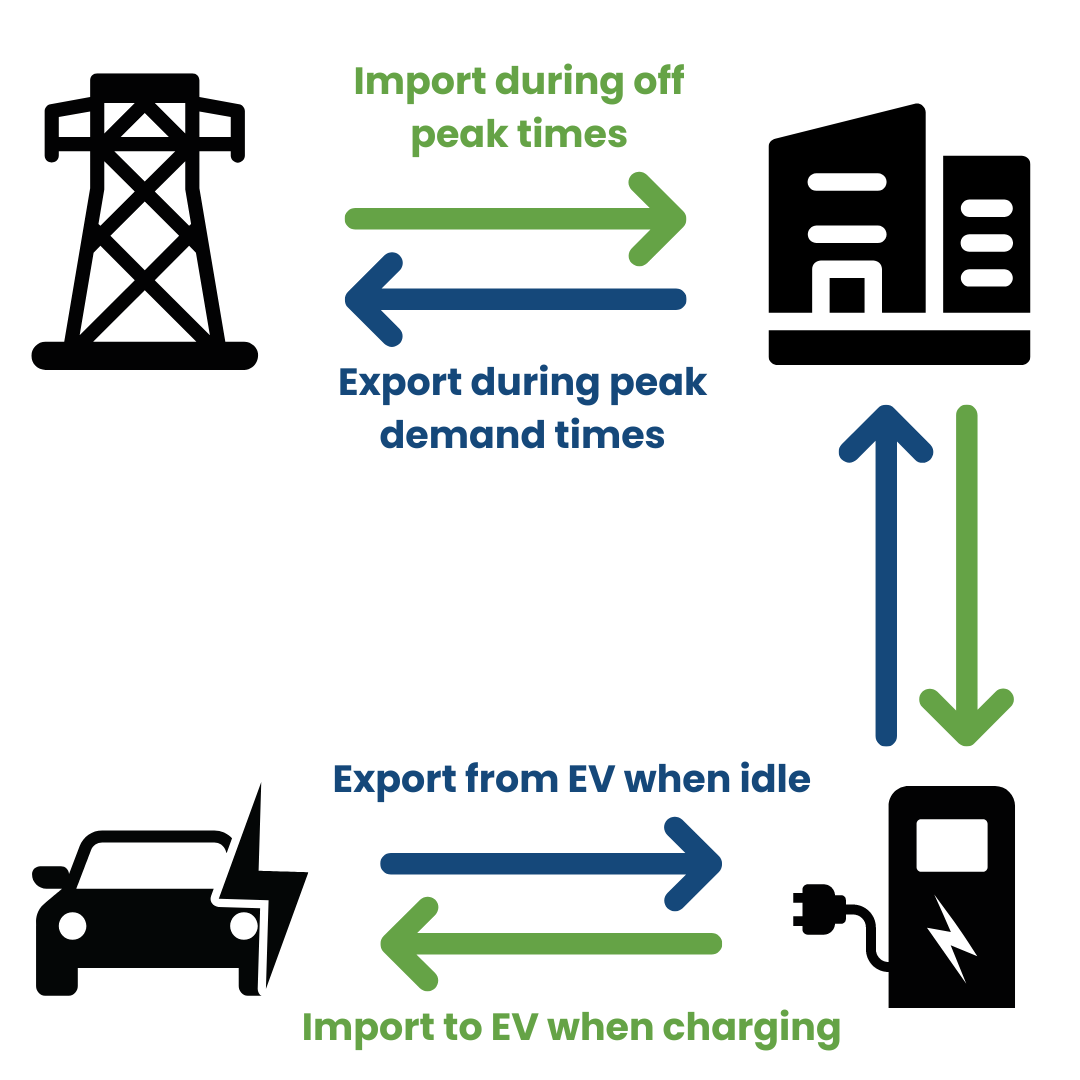6.1. Vehicle to grid (V2G)
Discover vehicle-to-grid (V2G) chargers for grid flexibility and cost savings. Read about Project Sciurus, the world’s largest V2G trial.
Vehicle to grid (V2G) chargers allow electricity to be imported and exported to the grid. They appear similar to a standard charge point but include bi-directional inverters which allow energy to flow both to and from the vehicle. This turns a vehicle into a portable battery. The grid, home, or business can then use this greener (and sometimes cheaper) imported energy during the grid’s peak times.
In a depot setting, V2G technology can also help with load management. If you have a site with a constrained energy supply and vehicles that only use a small proportion of their battery range per day, these vehicles can act like energy storage units. This involves charging up when electricity is cheap and using this stored energy to support the charging of the site’s more frequently used vehicles. It also retains enough charge for vehicles to complete their own duty cycles.
This allows more higher-mileage vehicles to be charged at once than would be possible with the existing grid connection. These systems will maximise the benefits of a time of use tariff by moving charging from when electricity is most expensive to when it is cheapest.
V2G has high potential to reduce total energy costs and increase the use of renewably sourced electricity. Car manufactures such as Nissan are also starting to integrate V2G capabilities into their newer models.
Project Sciurus, the world’s largest domestic V2G trial to date, has recently concluded, but others are ongoing. Nissan and E.ON are running a large scale V2G trial funded by the Department for Business, Energy & Industrial Strategy (BEIS, now known as the Department for Energy Security and Net Zero), the Office for Zero Emission Vehicles (OZEV), and Innovate UK to test this technology for commercialisation (E.ON, 2020).
You can see the successful projects for the V2X innovation programme below:
- V2X Innovation Programme: Phase 1 successful projects
- V2X Innovation Programme: Phase 2 successful projects
Keep a look out for upcoming trials. Participating in a trial may help you better understand the potential of V2G for your fleet.

Case study: Project Sciurus
Project Sciurus is the world’s largest V2G trial and was undertaken by OVO Energy, Nissan, and Indra to investigate the potential savings of domestic V2G. This three-year trial finished in 2021. Nissan Leafs were used with 6kW bi-directional units.
During the trial, users simply plugged their car in as normal and the charge point automatically imported or exported energy. The level of energy imported or exported was based on the user’s preferences (set via an app). The software behind the system used this information to ensure there was enough electricity imported to meet their demand when the vehicle was needed. The system varied importing or exporting based on grid demand peaks and falls.
The average user saved £420 per year. However, this varied significantly with how charge points were used: customers who were most flexible in when their vehicle could charge received the greenest energy and profited the most.
As EVs become more common and V2G is rolled out further, increased numbers of people could also benefit.